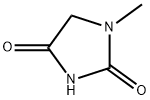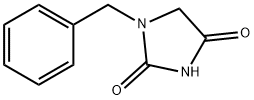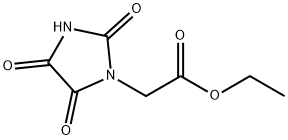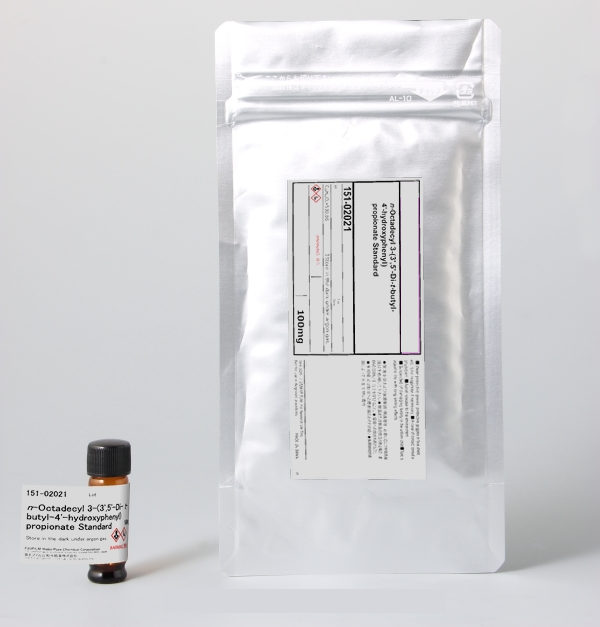1-METHYLHYDANTOIN
Synonym(s):1-Methylimidazolidine-2,4-dione;Dioxy-creatinine;NSC 80560
- CAS NO.:616-04-6
- Empirical Formula: C4H6N2O2
- Molecular Weight: 114.1
- MDL number: MFCD00003187
- EINECS: 210-460-6
- SAFETY DATA SHEET (SDS)
- Update Date: 2025-12-22 14:18:24

What is 1-METHYLHYDANTOIN?
Chemical properties
WHITE FINE CRYSTALLINE POWDER
The Uses of 1-METHYLHYDANTOIN
Reactant for organocatalytic tandem three component reactions of aldehyde, alkyl vinyl ketone, and amide
Reactant for synthesis of:
- Selective angiotensin II AT2 receptor agonists with reduced CYP 450 inhibition
- Allosteric glucokinase activators
- Hydantoin derivatives with antiproliferative activity
- Thiohydantoins
- P2X7 receptor antagonists
What are the applications of Application
1-Methylhydantoin is a useful intermediate
Definition
ChEBI: A imidazolidine-2,4-dione that is the N-methyl-derivative of hydantoin.
Metabolic pathway
The metabolic pathway of 1-methylhydantoin via 5-hydroxy-1-methylhydantoin, methylparabanic acid, and 5-N-methyloxaluric acid proves to be a major and general metabolic pathway in rabbits.
Properties of 1-METHYLHYDANTOIN
| Melting point: | 156-157 °C(lit.) |
| Boiling point: | 213.59°C (rough estimate) |
| Density | 1.284 |
| refractive index | 1.4487 (estimate) |
| storage temp. | Sealed in dry,Room Temperature |
| solubility | DMSO (Slightly), Methanol (Slightly) |
| form | Solid |
| pka | 8.94±0.10(Predicted) |
| color | White to Off-White |
| Water Solubility | Soluble in methanol. (almost transparency). Insoluble in water. |
| CAS DataBase Reference | 616-04-6(CAS DataBase Reference) |
Safety information for 1-METHYLHYDANTOIN
| Signal word | Warning |
| Pictogram(s) |
 Exclamation Mark Irritant GHS07 |
| GHS Hazard Statements |
H302:Acute toxicity,oral H315:Skin corrosion/irritation H319:Serious eye damage/eye irritation H335:Specific target organ toxicity, single exposure;Respiratory tract irritation |
| Precautionary Statement Codes |
P261:Avoid breathing dust/fume/gas/mist/vapours/spray. P301+P312:IF SWALLOWED: call a POISON CENTER or doctor/physician IF you feel unwell. P302+P352:IF ON SKIN: wash with plenty of soap and water. P304+P340:IF INHALED: Remove victim to fresh air and Keep at rest in a position comfortable for breathing. P305+P351+P338:IF IN EYES: Rinse cautiously with water for several minutes. Remove contact lenses, if present and easy to do. Continuerinsing. |
Computed Descriptors for 1-METHYLHYDANTOIN
New Products
Indole Methyl Resin tert-butyl 9-methoxy-3-azaspiro[5.5]undecane-3-carboxylate Boc-His(Boc)-OH 2-CTC Resin 4-Chloro-7-tosy1-7Hpyrrolo[2,3-d]pyrimidine 5,7-Dibromo-1H-indole 2,5-dichloro-N-hydroxy-4,6-dimethylpyridine-3-carboximidamide 2,2-Dimethoxy-7-azaspiro[3.5]nonane hydrochloride 4-chloromethyl-5-methyl-1,3-dioxol-2-one (DMDO-Cl) R-2-BENZYLOXY PROPIONIC ACID 1,1’-CARBONYLDIIMIDAZOLE 1,1’-CARBONYLDI (1,2-4 TRIAZOLE) N-METHYL INDAZOLE-3-CARBOXYLIC ACID 4-((2-hydroxyethyl)thio)benzoic acid 1-(TERT-BUTOXYCARBONYL)-2-PYRROLIDINONE Methyl 6-methylnicotinate 3-Pyridineacrylic acid tert-Butyl carbazate TETRAHYDRO-2H-PYRAN-3-OL 2-((4-morpholinophenylamino) (methylthio) methylene) malononitrile 3-(4-morpholinophenylamino)-5-amino-1H-pyrazole-4-carbonitrile 2,4-dihydroxybenzaldehyde 1,3-Diethyl-1,3-Diphenylurea Methyl 2-methylquinoline-6-carboxylateRelated products of tetrahydrofuran
![1-[(2,6-DICHLORO-4-METHYL-3-PYRIDYL)CARBONYL]-3-(2,5-DICHLOROPHENYL)IMIDAZOLIDINE-2,4,5-TRIONE](https://img.chemicalbook.in/StructureFile/ChemBookStructure2/GIF/CB4356668.gif)

![1-[4,6-BIS(DIMETHYLAMINO)-1,3,5-TRIAZIN-2-YL]-3-(2-CHLOROETHYL)IMIDAZOLIDINE-2,4-DIONE](https://img.chemicalbook.in/StructureFile/ChemBookStructure3/GIF/CB6755757.gif)





You may like
-
 1-Methylhydantoin CAS 616-04-6View Details
1-Methylhydantoin CAS 616-04-6View Details
616-04-6 -
 1-Methylhydantoin CAS 616-04-6View Details
1-Methylhydantoin CAS 616-04-6View Details
616-04-6 -
 Pyridine 99.5% HPLC /UV SpectroscopyView Details
Pyridine 99.5% HPLC /UV SpectroscopyView Details
110-86-1 -
 Piperazine Spot supply, best priceView Details
Piperazine Spot supply, best priceView Details
110-85-0 -
 Dibutyl PhthalateView Details
Dibutyl PhthalateView Details
84-74-2 -
 Imidazole Spot supply, competitive priceView Details
Imidazole Spot supply, competitive priceView Details
288-32-4 -
 Octadecyl 3-(3,5-di-tert-butyl-4-hydroxyphenyl)propionate 98% (GC)View Details
Octadecyl 3-(3,5-di-tert-butyl-4-hydroxyphenyl)propionate 98% (GC)View Details
2082-79-3 -
 Thiourea 99% ARView Details
Thiourea 99% ARView Details
62-56-6
Statement: All products displayed on this website are only used for non medical purposes such as industrial applications or scientific research, and cannot be used for clinical diagnosis or treatment of humans or animals. They are not medicinal or edible.
